Betta fish are some of the hardiest fish available in the aquarium trade today. They are well-known for their beautiful fins and vibrant colors and are relatively easy to care for. However, bettas are not immune to disease and parasites, and these problems can quickly take a toll on their health if they are not treated promptly.
One of the most common problems that bettas face is parasitism. Parasites are tiny organisms that live off of other creatures and can cause various problems for their hosts. This article will discuss the causes and treatments of parasites on betta fish.
Understanding Parasitic Infections
Before delving into the causes and treatments for common parasites infecting bettas, it’s important to have a basic understanding of parasitic infections.
There are two main types of parasites that can infect bettas: internal and external. Internal parasites live inside the fish and feed off their host’s blood or other tissues. External parasites live on the surface of the fish and feed off of their skin and scales.
Both parasites can cause various problems for bettas, including lethargy, reduced appetite, weight loss, difficulty breathing, and even death. However, did you know that in most cases, parasites already exist in the betta’s environment and only become a problem when the fish’s immune system is weakened?

This can happen for various reasons, including stress, poor water quality, and inadequate diet. When a betta’s immune system is weak, it becomes more susceptible to parasitic infections. In other words, it’s not necessarily the parasite itself that’s the problem, but rather the weakened state of the fish that allows the parasites to thrive.
With that said, let’s look at some of the most common parasites that affect bettas and how to treat them.
The Most Common Parasites That Affect Betta Fish
There are a number of different types of parasites that can affect betta fish, but some are more common than others. The most common parasites that you’re likely to encounter include:
1. Swim Bladder Disorder

Common as it may be, swim bladder disease leaves even the most seasoned fishkeepers perplexed about its sudden onset and possible causes. This disease, caused by a build-up of fluid in the swim bladder, can be brought about by several factors including constipation, overeating, stress, genetics, and parasitic infections.
You can learn about each possible causes here, but this article will focus on swim bladder diseases caused by parasitic infections. Internal parasites, such as nematodes and flukes, are the most common culprits for swim bladder disease in bettas. These parasites cause irritation and inflammation of the swim bladder, which prevents the fish from being able to control its buoyancy.
Treatment
If you suspect your betta has swim bladder disease, the first step is to look at its poop. Your fish likely has nematodes if you see any white, thread-like worms in its feces. These parasites are relatively easy to treat with an over-the-counter medication, such as Levamisole Hydrochloride.
If you don’t see any worms in its poop, but your betta is still displaying symptoms of swim bladder disease, it likely has flukes. These parasites are more difficult to treat and will require a trip to the vet for prescription medication. Your vet will likely sedate your fish, collect a tissue sample, and then prescribe a course of treatment based on the tissue sample results.
2. Gill Flukes / Gill Worms

Gill flukes and gill worms are two of the most common parasites affecting betta fish. These parasites attach themselves to the gills and feed off of the blood and tissue. This can cause various problems, including difficulty breathing, lethargy, reduced appetite, and even death.
The symptoms of gill flukes and gill worms are often mistaken for other diseases, such as bacterial gill disease or columnaris. This is why it’s important to take a close look at your betta’s gills if you suspect it may be infected with either of these parasites. The most obvious sign of an infection is the presence of white, thread-like worms attached to the gills.
Treatment
Typically, gill flukes and worms are introduced into a tank via infected live food or plants. If you suspect your betta has either of these parasites, the first step is to remove all live food and plants from the tank. Then, you should do a water change and treat the tank with an anti-parasitic medication, such as Levamisole Hydrochloride.
You will need to repeat the water change and treatment process every 7-10 days for at least 4 weeks to ensure all the parasites are gone. Even if your fish appear healthy, there is a good chance that the parasites may have already laid eggs that are just waiting to hatch.
The last thing you want is for your betta to become reinfected, so it’s important to follow the treatment plan even after the fish seem to be back to normal.
3. Intestinal Parasites
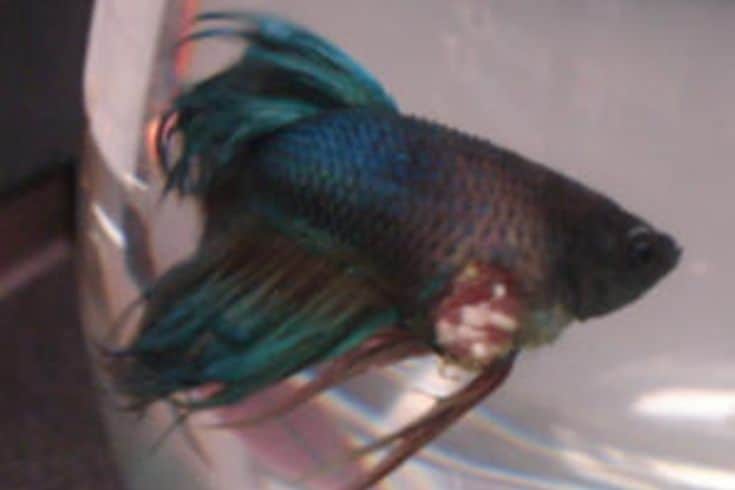
Intestinal parasites, true to their name, reside in the intestines and feed off of the food that the fish eats. The most common type of intestinal parasites are nematodes, which are small, white, thread-like worms. These parasites are usually introduced into a tank via infected live food or plants. Bloodworms and brine shrimp are particularly likely to be infected with nematodes.
Some key symptoms of intestinal parasites are loss of appetite, weight loss, lethargy, and diarrhea. Once you notice your fish displaying these symptoms, taking action quickly is important, as intestinal parasites can quickly lead to death.
Treatment
The best way to treat intestinal parasites is to quarantine the affected fish and observe it for 7-10 days. If the fish does not improve within this time frame, it’s likely that it has intestinal parasites and will need to be treated with an anti-parasitic medication. Vets typically prescribe Fenbendazole for the treatment of intestinal parasites.
Because live foods carry such a huge risk of introducing parasites into your tank, it’s best to avoid them altogether. If you choose to feed your betta live food, purchase it from a reputable source. Alternatively, you could opt for freeze-dried or frozen foods, which are just as nutritious but don’t carry the same risk of parasites.
4. Fish Lice
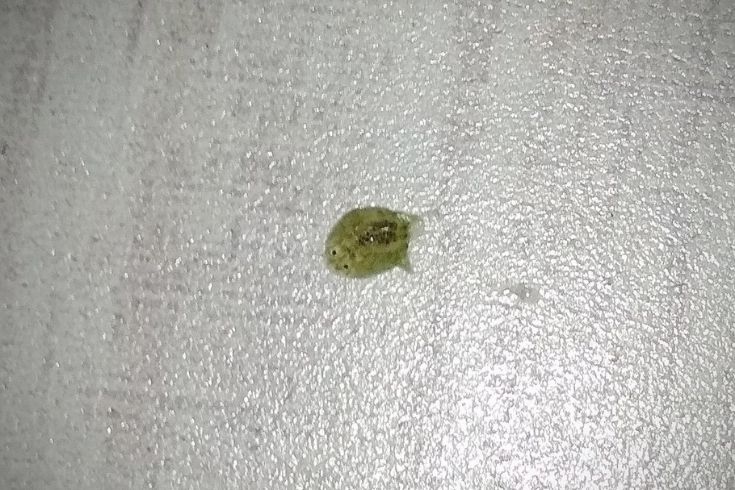
Did you think only mammals could get lice? Unfortunately, fish are also susceptible to these pesky parasites. Fish lice are large, flat, and oval-shaped, with rows of sharp spines running down their backs. Unlike other types of parasites, fish lice are visible to the naked eye and are usually fairly easy to spot.
These parasites attach themselves to the skin of their host fish and feed on their blood. This can lead to a number of health problems for the affected fish, including anemia, weight loss, and lethargy. In severe cases, fish lice can even cause death.
Treatment
If you spot fish lice on your betta, the best course of action is to remove the affected fish from the tank and treat it in a separate quarantine tank. You will need to treat the main tank as well, as fish lice can lay eggs that will hatch and infect other fish.
A few different products can be used to treat fish lice, including Malachite Green and Formalin. You will need to follow the directions on the product label carefully, as these products can be toxic to fish if used incorrectly.
5. White Spot
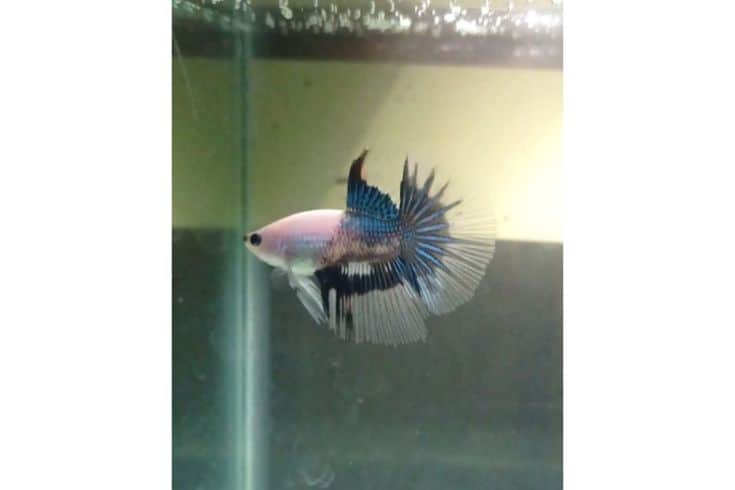
The Ichyophthirius multifilis parasite, more commonly known as White Spot, is one of the most common parasites to affect betta fish. This parasite is barely visible to the naked eye, but it can cause a great deal of harm to its host.
White Spot is most commonly introduced into a tank via infected live food or plants. The parasite attaches itself to the fish’s skin and feeds on its blood. This can lead to a number of health problems for the affected fish, including anemia, weight loss, and lethargy. In severe cases, White Spot can even cause death.
Fish with weakened immune systems are especially susceptible to this parasite. If your betta is stressed or recently ill, it’s important to be extra vigilant in preventing White Spot.
Treatment
White spot disease is fairly common in betta fish and fairly easy to treat. A number of different products are available for treating White Spot, including Malachite Green and Formalin. If you need clarification on how to use these products, ask your vet or a knowledgeable aquarium enthusiast.
You will also need to dose your tank appropriately. The types of medication used to treat white spot can be harmful to tank inhabitants if used incorrectly – too little, and the parasites won’t be eliminated; too much, and your fish could be poisoned.
When dosing your tank, removing any carbon from your filter is important. This will allow the medication to remain in the water long enough to be effective, without posing a risk to your fish.
6. Slime Disease
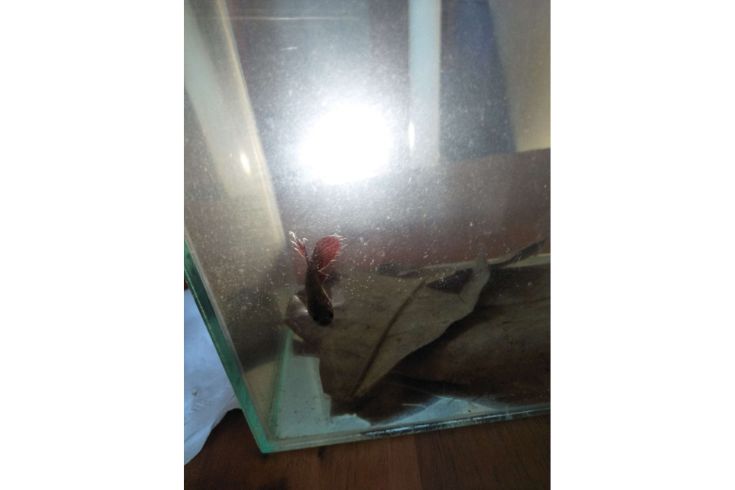
Slime Disease got its name from, as you might have guessed, the slimy appearance it gives affected fish. This disease is a symptom of several different parasitic infections, because mucus production is usually used by the body to ward off parasites.
If your betta fish is affected by Slime Disease, you will notice a white or yellow slime coating on its skin and fins. The fish may also appear lethargic and have difficulty breathing. After all, the slime coating can interfere with the fish’s ability to absorb oxygen from the water.
While Slime Disease isn’t usually fatal on its own, it can lead to secondary infections that can be deadly. It’s important to treat Slime Disease as soon as possible to prevent further complications.
Treatment
The first step in treating Slime Disease is to figure out what’s causing it. Is your fish infected with a parasite? Or is it suffering from some other condition that’s causing an increase in mucus production?
Once you’ve determined the cause of the disease, you can begin treatment. If a parasite causes the disease, you’ll need to treat the tank with appropriate medication. If the cause is something else, like an infection or poor water quality, you’ll need to address that issue first.
In either case, keeping your betta’s tank clean is also important. The extra mucus production can lead to poor water quality, which will only worsen the situation. Be sure to perform regular water changes and keep an eye on your filtration system to ensure it’s functioning properly.
7. Velvet

Velvet is a parasitic disease affecting betta fish’s skin and gills. The parasite that causes Velvet, Ophryoglena nana, is very small – so small that it can only be seen with a microscope. This parasite is most commonly introduced into a tank via infected live food or plants.
Velvet typically manifests as a fine dusting of gold or yellow on the skin of affected fish. In severe cases, the entire body may be covered. As the disease progresses, affected fish may become lethargic and stop eating. Velvet can also cause gill damage, leading to difficulty breathing. If left untreated, Velvet can be fatal.
Treatment
Fortunately, Velvet is relatively easy to treat. The most common treatment is to raise the temperature of the tank to 86 degrees Fahrenheit for 10 days. This will kill the parasite without harming your fish.
You can also use a copper-based medication to treat Velvet. This will need to be used for 14 days, and you will need to remove any carbon from your filter while the medication is in use.
If you have live plants in your tank, you will need to remove them before treating for Velvet. This is because most copper-based medications will also kill plants. Once the treatment period is over, you can add the plants back into the tank.
8. Anchor Worms
Anchor worms are a type of parasitic crustacean that can infest betta fish. These worms attach to the fish’s skin and feed on their blood. Anchor worms can grow up to half an inch in length, typically white or yellow.
While anchor worms are not typically fatal, they can cause a great deal of discomfort for affected fish. The worms can also introduce secondary infections into the fish’s skin, which can be fatal.
Treatment
Anchor worms can be difficult to treat, as they are often resistant to medications. The best course of action is to remove the worms manually. This can be done by using a pair of tweezers to carefully pull the worms off the fish.
You may also need to treat your fish with a course of antibiotics to clear up any developed secondary infections. Secondary infections can be very serious, so you must get your fish to a veterinarian as soon as possible if you suspect they may have anchor worms.
9. Hole in the Head
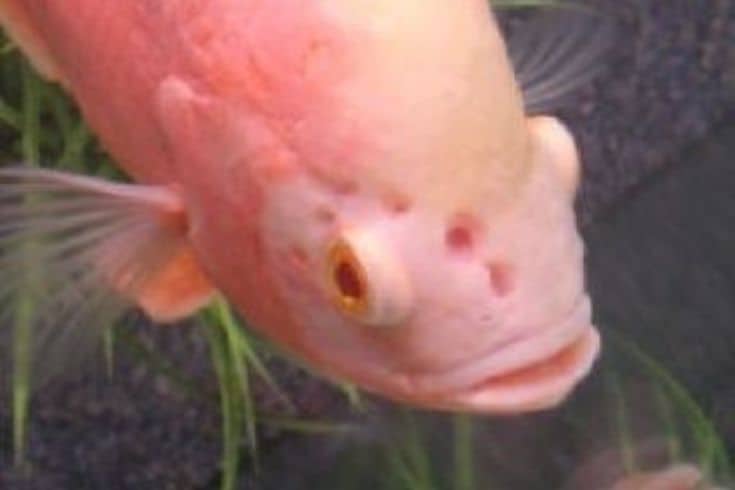
Last but not least, we have the ever-mysterious Hole in the Head disease. The cause of this disease is unknown, but it is thought to be linked to poor water quality or a lack of essential nutrients in the diet.
Hole in the Head manifests as, you guessed it, holes forming in the head of the fish. These holes can range in size from tiny pinpricks to large open sores. In severe cases, the holes can spread down the body of the fish and cause damage to the fins and tail.
Hole in the Head is a slowly progressing disease, and it can take months or even years for holes to form. The good news is that Hole in the Head is not typically fatal, and many fish live long and happy lives despite having the disease.
Treatment
There is no known cure for Hole in the Head, but the disease can be controlled with proper tank maintenance and care. Be sure to keep your tank clean and well-filtered, and ensure that your fish get a nutritious diet. You may also need to supplement your fish’s diet with vitamins and minerals to ensure they get all the necessary nutrients.
If you suspect that your fish has Hole in the Head, be sure to take them to a veterinarian for a diagnosis. This is important, as Hole in the Head can sometimes be confused with other diseases that do have a cure.
Preventing Parasites in Betta Fish
If you’ve ever heard the saying, “An ounce of prevention is worth a pound of cure,” then you know how important it is to prevent parasites in betta fish before they become a problem. Here are some ways to prevent parasitic infections in bettas:
Practice Good Tank Maintenance
Maintaining your tank well is the best way to prevent parasites and other diseases in bettas. Be sure to clean your tank regularly, and keep an eye on your water quality. A dirty tank is not only a breeding ground for parasites but can also weaken your fish’s immune system, making them more susceptible to infection.
A key aspect of tank maintenance is doing regular water changes. Depending on the size of your tank, you should do a water change of at least 20% every week. You may need frequent water changes if you have a heavily stocked tank.
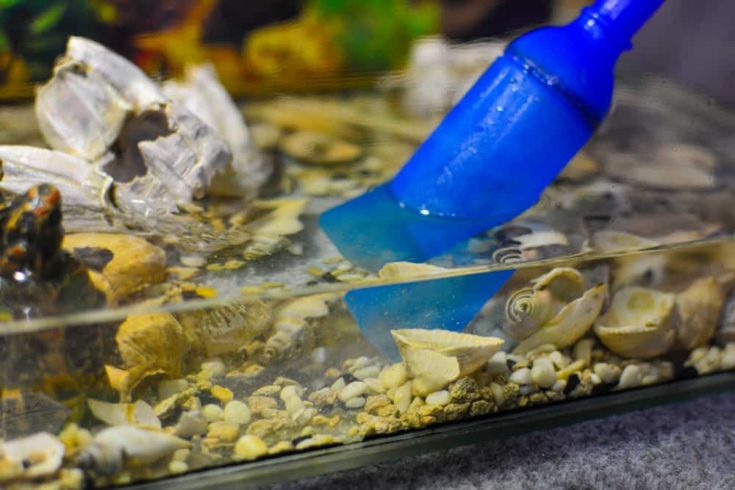
In addition to water changes, vacuum the gravel in your tank to remove any uneaten food or waste. This will help keep your tank clean and free of parasites.
Feed a High-Quality Diet
Feeding your betta a high-quality diet is also important for preventing parasites. A nutritious diet will help keep your fish’s immune system strong and help them fight off infection if they become infected.
A variety of high-quality betta foods are available on the market, so you should have no trouble finding something that your fish will enjoy. Be sure to read the labels carefully to make sure that you are feeding your betta a nutritious diet.
Quarantine New Arrivals
If you are adding new fish to your tank, it’s important to quarantine them before adding them to your betta’s tank. Quarantine is the process of isolating new fish in a separate tank for a period of time (usually 2-4 weeks) to make sure that they are not carrying any diseases.

During the quarantine period, you should observe the new fish closely for any signs of disease. If you notice anything suspicious, it’s best to err on the side of caution and not add the fish to your
The Takeaway
Parasites can be a big problem for betta fish, but with a little knowledge and effort, you can prevent them from becoming a problem in your tank. Be sure to practice good tank maintenance, feed your betta a high-quality diet, and quarantine new arrivals to help keep parasites at bay.
If you think your fish may be infected with parasites, you should take them to a veterinarian for a diagnosis. With proper treatment, most bettas can recover from a parasitic infection and live happy lives.
We hope this article has helped teach you about the causes and treatments of parasites in betta fish. If you have any questions, please feel free to leave a comment below. Thanks for reading!
